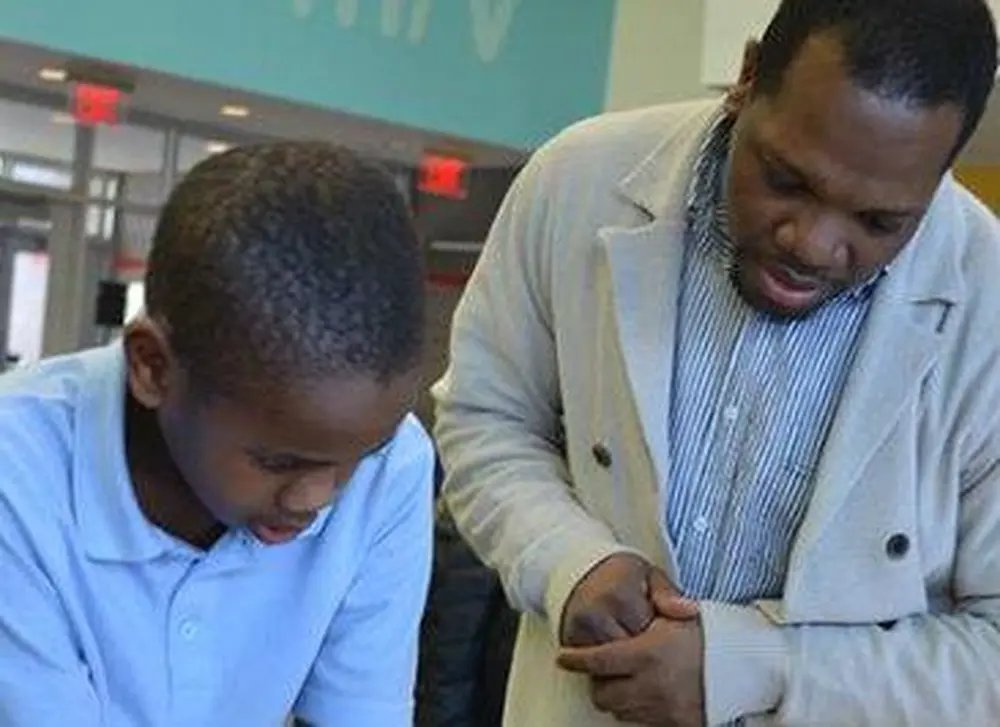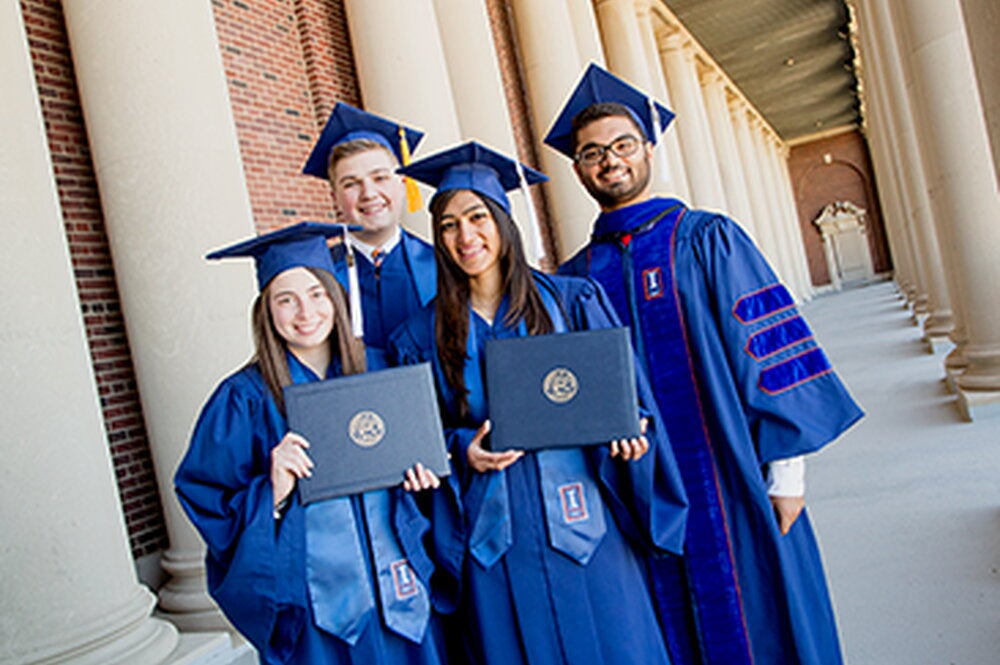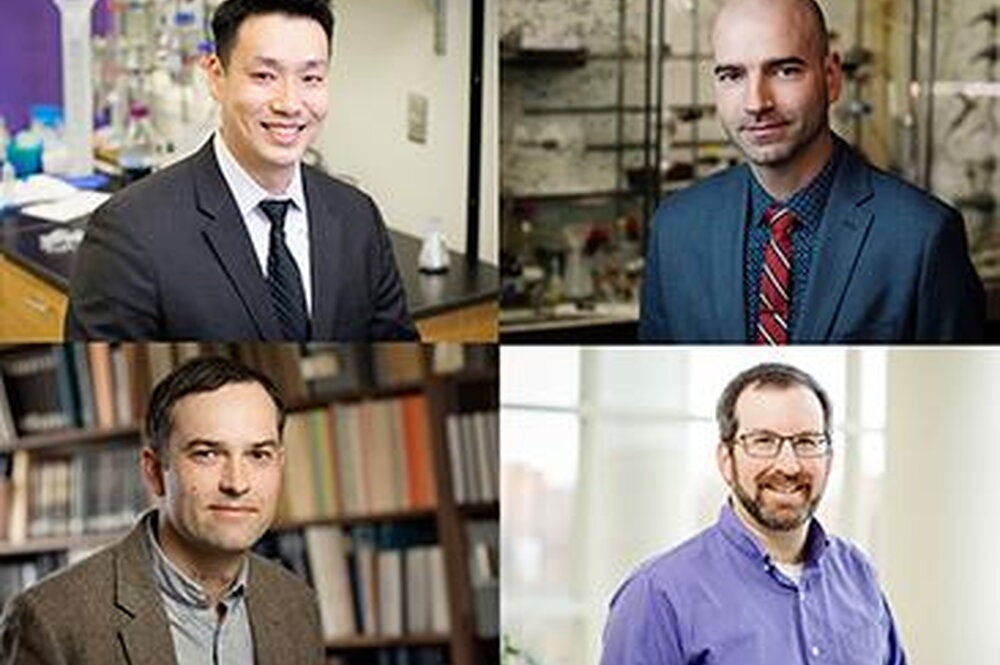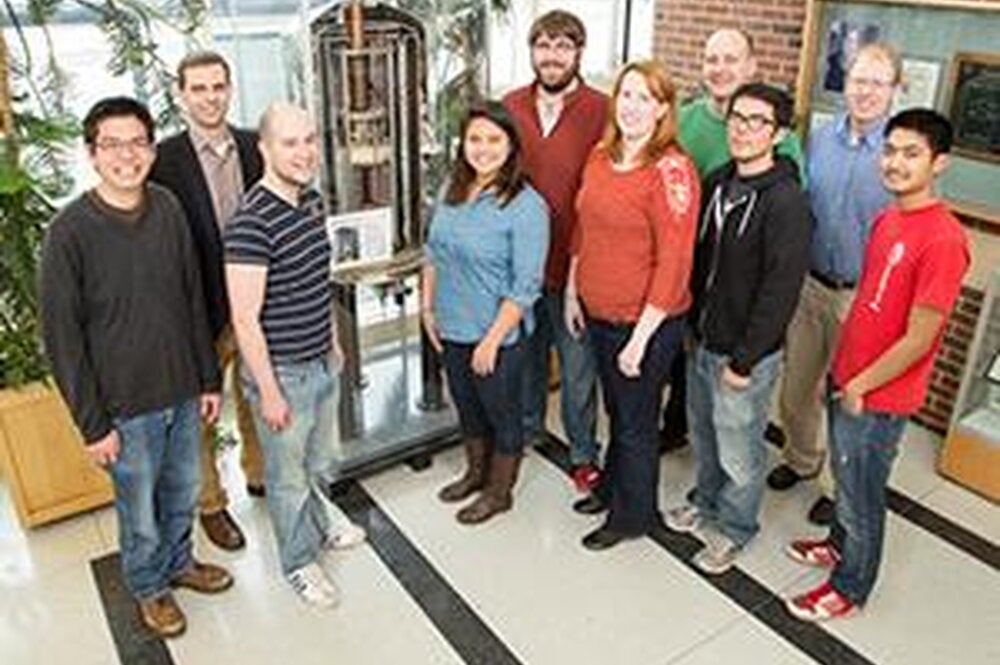

Jerrod Henderson knows how little things make a big difference to a child. He recalls that when he was in the sixth grade, growing up in North Carolina, he traveled with a youth organization to Baltimore, Md., to see the Black Engineer of the Year Awards Conference. At some point, they let the kids wander around the career fair.
“They used to give all these free goodies at the career fair,” Henderson recalls, with a laugh. “So imagine us middle schoolers, we’re just going around picking up the goodies. But I kept going back to the chemical engineering tables, because they had all the coolest goodies.”
Guess what: Today he’s a lecturer in the Department of Chemical and Biomolecular Engineering, after receiving his master’s and doctoral degrees in chemical engineering from Illinois in 2007 and 2010, respectively. What’s more, he’s been recognized for his outreach efforts to children, particularly minorities, in ongoing efforts to increase their interest in science, technology, engineering, and mathematics (STEM) fields.
Henderson received the 2014-15 Campus Award for Excellence in Public Engagement, for coordinating the chemical engineering section of the Girls Adventures in Science, Mathematic & Engineering (G.A.M.E.S.) Camp, and for developing the St. Elmo Brady STEM Academy to expose underrepresented fourth and fifth grade boys and their families to STEM fields.
“I just feel like it’s my responsibility to give back to the community that I’m a part of,” Henderson says. “I really think the early exposure to STEM is crucial. We found that probably around the fourth grade, kids develop this STEM ‘anti-identity,’ where they say, ‘I hate science, I hate math.’ Or some teachers told them that they’re not good at it. So this is our way of counteracting that.”
Through Henderson, the department works with the College of Engineering to conduct the G.A.M.E.S. Camp, which each summer exposes about two dozen high school girls from around the country to STEM fields. The chemical engineering portion of that experience lasts about a week.
The St. Elmo Brady STEM Academy, which Henderson co-founded with Ricky Greer, a laboratory assistant in the Department of Chemical and Biomolecular Engineering, operates through two local elementary schools. They hope to expand the program—Henderson dreams of St. Elmo Brady academies across the country—and currently about 30 fourth and fifth grade boys and their family members participate in the academy three days a week for hands-on experiments and other activities, and mentoring by Illinois students and faculty.
The academy is named for St. Elmo Brady, who emerged from the University of Illinois in 1916 as the first African American in the nation to be awarded a doctoral degree in chemistry. (Brady is listed in the College of LAS Gallery of Excellence). One day, as Henderson and Greer tried to think of a name for the new academy, Henderson recalled seeing the man’s portrait in Noyes Laboratory.
“It turns out that the co-founder of the program (Greer) is a graduate of Tuskegee University, which is actually one of the places where St. Elmo Brady worked,” Henderson says. “And this is the cool part: St. Elmo Brady was mentored by Booker T. Washington, and we started our program at Booker T. Washington Elementary School. So the stars had aligned.”
The most important part of the St. Elmo Brady Academy, Henderson says, is the engagement with the participants’ fathers—or brothers, uncles, grandfathers, mentors, or anyone else who is available—who conduct experiments with the kids. It’s a meaningful connection for kids whose relationships with their fathers may be strained, he says.
“To see the interaction (between children and fathers) is amazing,” Henderson says. “When we did a pilot program for this, when we saw how engaged the fathers were, and the dynamics even when other men are there for these students...we were really excited about that, and we wanted to expand upon that.”
Indeed, Henderson has many ideas for expanding his outreach efforts. Henderson and Greer have been able to obtain funding to hire a director and program coordinators for the St. Elmo Brady Academy (anyone who wants to contribute may do so through the Department of Chemical and Biomolecular Engineering), and they are using their experiences to develop research papers about the results of the program.
Additionally, Henderson is hoping to develop the chemical engineering equivalent of the popular Saturday Physics for Everyone program at Illinois, featuring lectures and demonstrations to high schoolers, families, and the community, free of charge. He’s partnered with the Department of Physics to put a booth at the local farmer’s market this summer, and Henderson is hoping to team chemical engineering with other units during summer camps in the future.
All this may come as no surprise to Nathaniel Vause, who organized the trip to Baltimore long ago when Henderson was first exposed to chemical engineering. In 2010, Vause traveled to Urbana-Champaign to see Henderson receive his doctoral degree, and he brought with him an old newspaper article written about the Baltimore trip after Henderson arrived back home. Henderson happened to be one of the children asked by the reporter what he wanted to be when he grew up.
“I said ’chemical engineer,’ not really knowing what it was,” Henderson recalls, with a laugh. He knows what chemical engineering is now—and how it can guide a lifetime.


